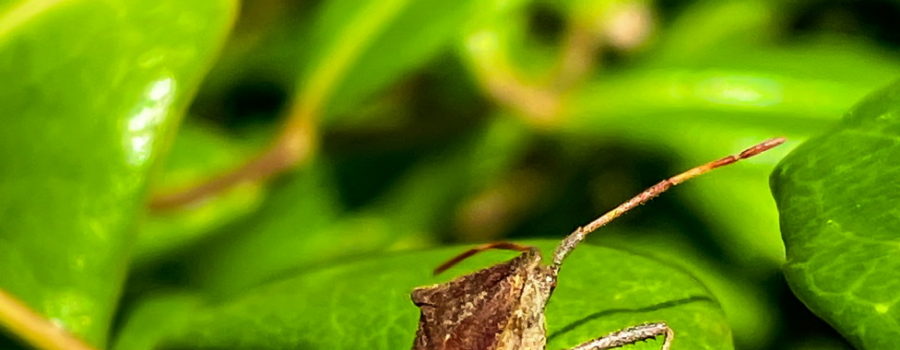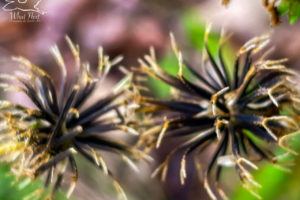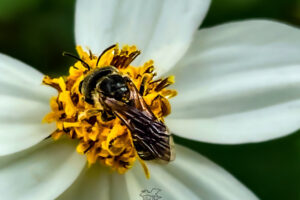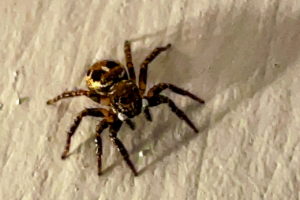Pros and Cons of the Interesting Eastern Leaf-footed Bug

When taking photos in nature, you never really know what you may stumble across. Last spring there was a gorgeous coral honeysuckle plant with it’s long, trumpet-shaped flowers blooming beside one of the roads that I take to get in and out from my house. I stopped several times to take photos of the flowers in various stages of development. On one of those stops, I also found an extra little friend waiting for me, wanting it’s picture taken. This little guy was an Eastern leaf-footed bug (Leptoglossus phyllopus), one of several species of leaf-footed bugs that live here in Florida. These insects can be found in much of the eastern United States from New York south through Florida and as far west as Texas, New Mexico, and even southern parts of California. It is also found throughout Mexico and as far south as Costa Rica.
Like most leaf-footed bugs, the Eastern leaf-footed bug feeds on a variety of plants including some crop plants, vegetables, ornamentals, and weeds. It feeds by piercing the surface of leaves, stems, fruits, and nuts and drawing juices through an extended mouth part. Unfortunately, the punctures often open the plant structures up to other pathogens which may damage the area affected. In small numbers, leaf-footed bugs usually do minimal damage, but in larger numbers they can cause significant problems, especially in crops and vegetables. Some of the plants that they are known to infest include citrus trees, peaches, blueberries, pecans, tomatoes, cotton, beans, crepe myrtles, hibiscus, blackberries, goldenrod, jimsonweed, and thistles. Interestingly, leaf-footed bugs tend to move in good sized groups, and it’s not unusual to find a large number of them on one tree or plant, and none on the surrounding plants.

It’s no surprise that leaf-footed bugs acquired their common name due to their wide, flattened tibias which resemble dead leaves. It is believed that these structures are used by males when fighting for mates. The wide hind limbs can be used to pin other males down in a show of dominance. The breeding cycle for these insects begins in the spring as the temperatures begin to warm and the over wintering adults emerge from their hiding spots. The females lay their eggs on the undersides of leaves near a vein. The eggs are laid in rows of about 20 eggs each. When the eggs hatch the reddish colored nymphs are released onto the plant and begin to feed. The nymphs go through five instars and usually loose their reddish coloring very quickly, but they don’t attain their wide legs until near maturity. There are usually several generations produced per year. I’m sure that the specimen in these photos was one of the over wintering adults, since it was early spring at the time.
Luckily for most growers, there are quite a few predators that eat leaf-footed bugs including quite a few species of birds, most spiders, and assassin bugs. In addition, some wasps eat the eggs before they even hatch, and some flies parasitize the adults and larger nymphs. Some people also plant trap crops (a plant that is more appealing) such as thistles away from the garden to lure the insects away from fruits and vegetables. Generally, the population of these insects stays small enough that the damage they do is tolerable and no controls other than those provided by nature are required.

I’m not a gardener and I only plant occasional self sufficient “ornamentals”, so I simply find the leaf-footed bugs just another interesting example of the diversity of creatures that live on this Earth. It is my habit (with a few exceptions) to live and let live, but I do understand the concerns of gardeners and farmers. Except for finding them interesting to study, my feelings about leaf-footed bugs are pretty neutral, but if they help to feed my spiders and birds, then they can’t be all bad!





Recent Comments